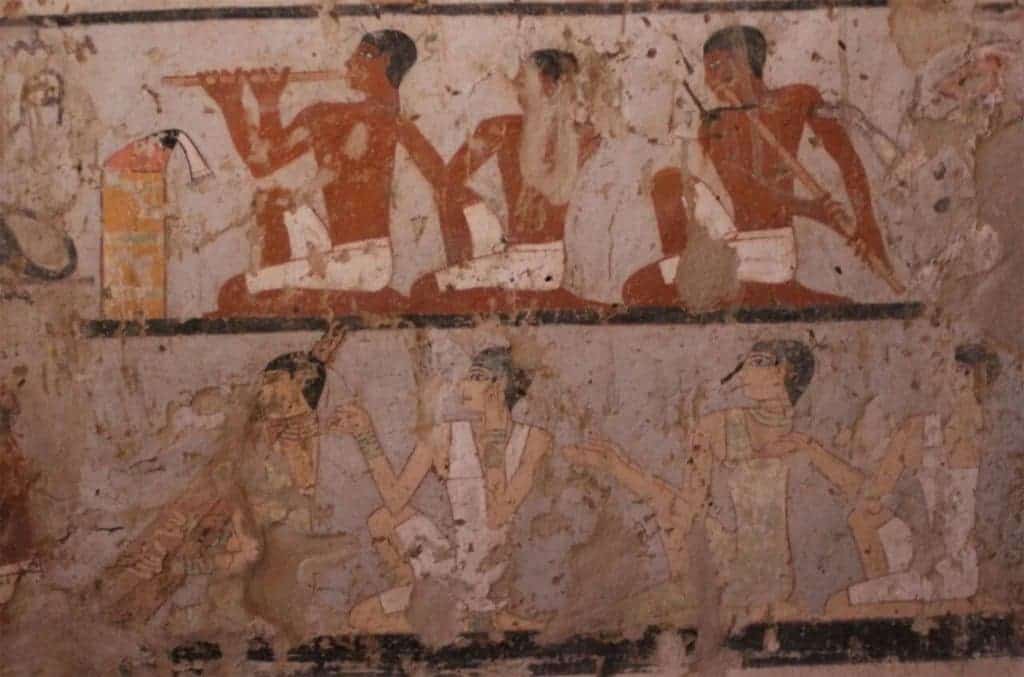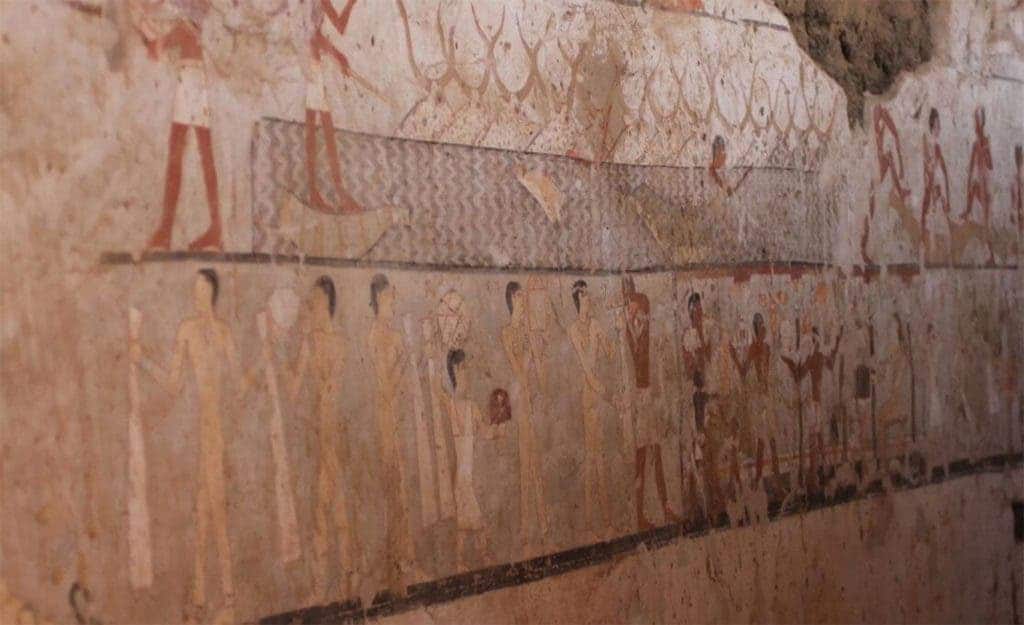Archaeologists in Egypt have unveiled the tomb, which features impressive paintings of a priestess, offering a rare glimpse into the ancient life of a high ranking woman.

Hetpet was a priestess of Hathor, the primaeval goddess of joy, feminine love, and motherhood. Female priestesses weren’t common in ancient Egypt, but Hathor was somewhat of an exception since she was the patron god of women. Previous findings have suggested that some of Hathor’s priestesses were tattooed and also dubbed as dancers and singers. After all, at one point, Hathor was the most popular of the Egyptian gods, and more festivals were dedicated to her honor than any other Egyptian deity.
It’s not clear how the life of a priestess differs from her male counterpart, which is what makes the finding even more intriguing.
4,400-year-old tomb discovered by archaeologists near the pyramids outside #Cairo, likely belongs to a high-ranking priestess known as Hetpet during the 5th Dynasty of ancient #Egypt pic.twitter.com/NlYdAglAf3
— CGTN (@CGTNOfficial) February 3, 2018
The tomb is well-preserved and features impressive paintings, mostly depicting Hetpet hunting and fishing. Other paintings show images of dancing, singing, and even monkeys — which were commonly kept as pets at the time. However, monkey paintings are extremely uncommon. In one instance, the animals are shown picking fruit and carrying a basket, while in another, a monkey is dancing in front of an orchestra. This is only the second painting of a dancing monkey found in Egypt — the first one dating from the 12th century BCE, more than 3,000 years later.

It’s unclear if Hetpet herself cherished monkeys, if it has to do with her worshipping, or if it’s something different altogether.
“The tomb has very distinguished wall paintings, in a very good conservation condition, depicting ‘Hetpet’ standing in different hunting and fishing scenes or sitting before a large offering table receiving offerings from her children,” Egypt’s antiquities ministry said in a statement.
“Scenes of reaping fruits, melting metals and the fabrication of leather and papyri boats as well as musical and dancing performances are also shown on walls,” they said.
Hetpet lived during Egypt’s Fifth Dynasty, during a prosperous time referred to as the Old Kingdom. This was the greatest age of pyramid building, when pharaohs erected many of the monuments that still stand tall and proud today. Khaled el-Enany, the Egyptian antiquities minister, said that it appears that Hetpet was an important person in her time, with a “strong link” to the royal palace.
Unfortunately, the tomb appears to have been looted at some point. Hetpet’s mummy has been stolen, as well as her statue and any valuables which may have been buried along with her.
In Egypt, this is the first archaeological finding of the year. Authorities hope that much more will come, rekindling the interest for Egyptian archaeology and bringing along an influx of tourists.


